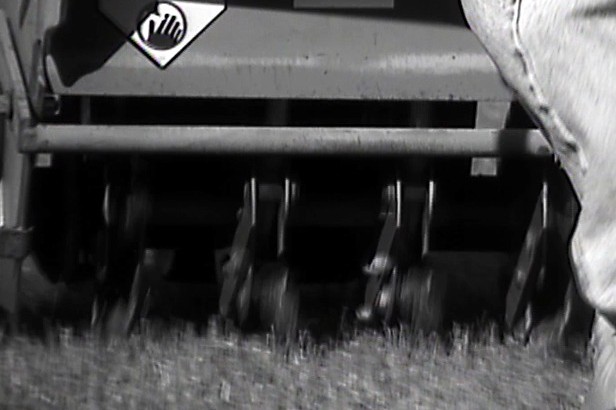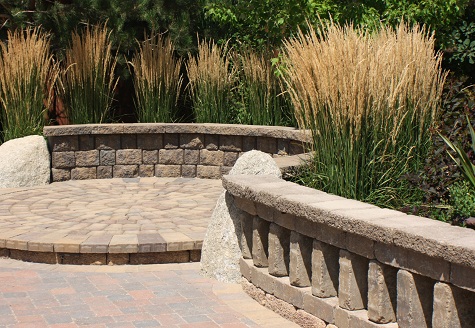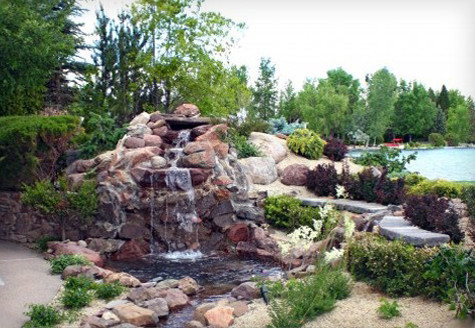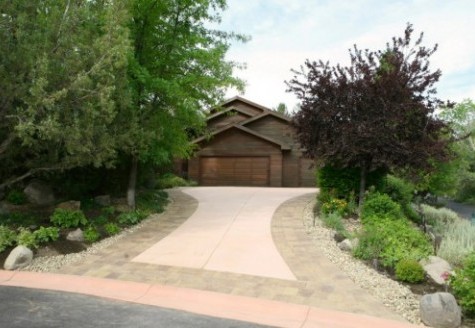Blog
Master Gardener: Time to shut off sprinklers
Written by
Susan Donaldson
University of Nevada Cooperative Extension
Now that night temperatures are dipping below freezing, it’s time to think about turning off your irrigation system.
Shorter days, cooler temperatures and plant dormancy, all signal decreased needs for water. To avoid damage from freezing, shut off your system before cold temperatures arrive. Watch the weather and the long-term forecasts to know when the time is right to shut down your irrigation system. Most years, you’ll want to turn it off by Halloween.
Before you do, soak your trees and shrubs to a depth of 18 inches to make sure the soil is moist. Irrigate to the drip line of the plants — the outer tips of the branches — using soaker hoses or sprinklers. Most drip systems, unless they are sprayers, don’t provide sufficiently uniform water coverage to do the job. Read More
How to Aerate a Lawn

How to Aerate a Lawn
Aeration is the process of getting oxygen to plant roots. Learn how to reinvigorate your compacted lawn through aeration.
- Time – 2 hours
- Price Range $50 – $100
- Difficulty – Moderate
Highlights:
- Step:1 Determine the Need for Lawn Aeration
- Step:2 Prepare the Lawn for Aeration
- Step:3 Aerate the Lawn
- Step:4 Apply Compost or Sand Over the Aerated Lawn
Click the full article http://www.diynetwork.com/how-to/how-to-aerate-a-lawn/index.html Read More
Five No-Cost Landscaping Tips
By Del Aguilar, of All Seasons Lawn & Landscaping.
January 29, 2011
Are there ways to improve your landscaping that will not cost you a fortune? How can you get great results without falling into a financial black hole?
Truth is most landscaping does take money, but there are some low-cost and no-cost options that you can put into action that will help you to get the best results. Landscaping in northern Nevada’s Great Basin is challenging to say the least. The average annual rainfall is 4 inches to 8 inches and the growing season is less than 160 days. Temperatures in the spring, summer and fall can fluctuate 40 degrees to 50 degrees in a single day which plays havoc on our trees, shrubs and perennials, not to mention the vegetable gardens. Our summers are characterized by 90 degree to 100 degree temperatures coupled with hot dry winds, making it difficult to keep plants from turning brown and shriveling. While these ideas will not cost you a lot of money they will cost you time, so prepare for that. Read More
Watering in the Winter

(Reno, NV) All Seasons Lawn and Landscaping wants to remind everyone that trees, shrubs, lawns and other plants need supplemental water to stay healthy during extended winter dry spells like the one we are in now. A myth is that plants and lawns don’t need water in the winter time, but that is just not true. Usually plants and lawns receive enough water in the winter from rain and snowfall to avoid having to turn on the sprinklers or hand water, but extended periods without precipitation lead to stressed plants and lawns that may not recover in the spring.
Generally, Plants and lawns need water every 5-6 weeks in the winter. Even if you’re used to just letting your plants sit dormant over the winter, right now you might want to think about pulling your hose out of storage or starting up that irrigation system:
- Watering days are the same, with no time restrictions.Visit http://tmwa.com/conservation/assigned_day_watering for more info
- Starting up your sprinkler & drip system, letting it run 3-5 cycles and properly draining and re-winterizing it the same day is highly recommended
- Water late morning, when the water has plenty of time to reach the root zones without freezing.
- Best time to water is between 10am – 2pm when it’s warmer. If parts of the drip system are frozen, hand water those areas.
Proper Winter Watering during Dry spells
Truckee Meadows Water Authority Reminds Customers about Proper Winter Watering during Dry Spells
(RENO, Nev.) – Truckee Meadows Water Authority (TMWA) reminds residents that trees, shrubs, lawns and other plants need supplemental water to stay healthy during extended winter dry spells like the one we are in now. TMWA’s Conservation Department offers these tips to help your yard get through a dry winter, while still protecting your home.
- Water in the late morning, when the water has plenty of time to reach the root zones without freezing.
- For trees and shrubs, a soaker hose is a great way to gradually water the roots. It slowly seeps water out, so you can leave it on for an hour or two at a time.
- For smaller plants or small turf areas, a hose with a nozzle is recommended.
- For larger turf areas, you may want to turn on your irrigation system. Leave the sprinklers on during the day for only 10 minutes at a time to prevent runoff.
Winter Watering

All this warm, dry weather is abnormal for this time of year, so even if you’re used to just letting your plants sit dormant over the winter, right now you might want to think about pulling your hose or sprinkler out of storage.
- Get out the hoses or run the sprinklers.
- Lawns on south-facing, southwest facing areas and slopes should get special attention since they receive more sun.
Winter drought can lead to root injury or death. These drought-injured plants may not show symptoms of the problem until the next season or even the next year. In fact they may leaf out and flower just fine in the spring, relying on stored food reserves. Once that energy supply runs out plants weaken and start dying back. Even if a plant isn’t killed outright, it is made more susceptible to insect and disease attack.
Northern Nevadans, if we want to save our lawns, we’re going to need to do some unseasonable gardening Read More











